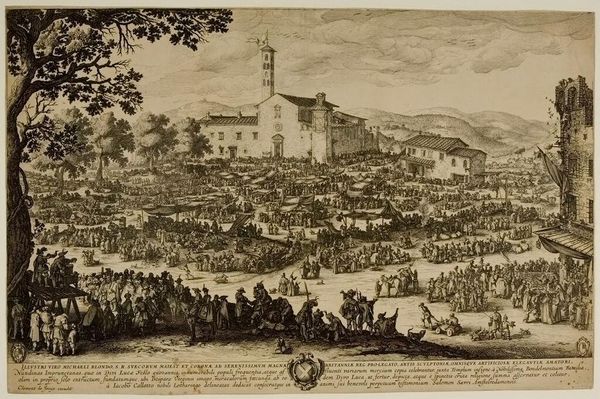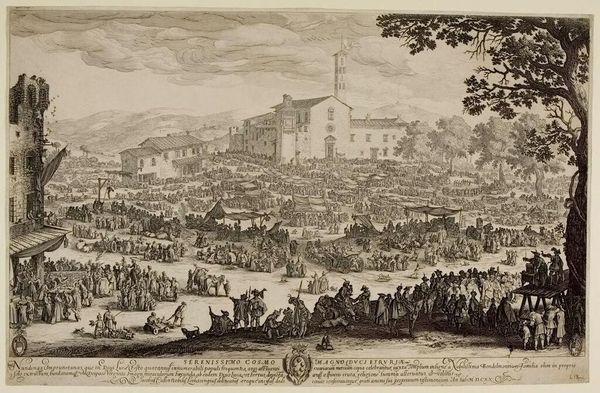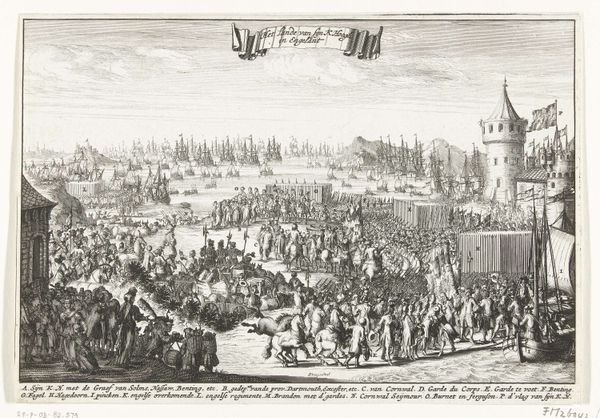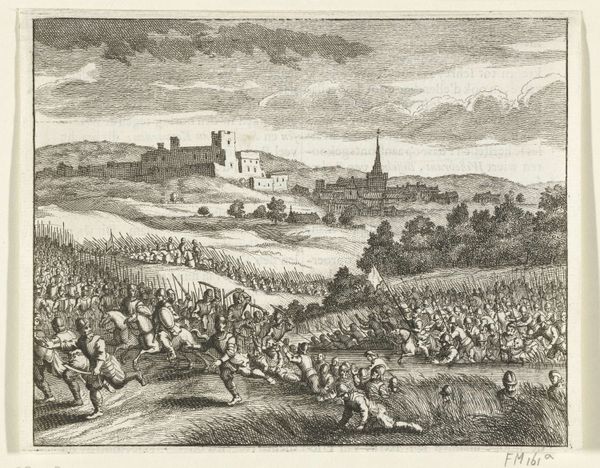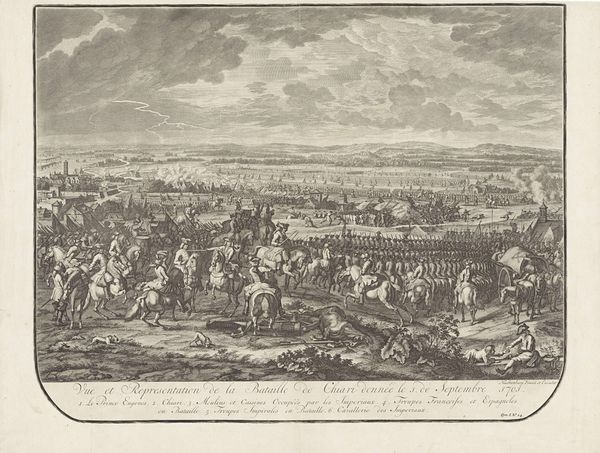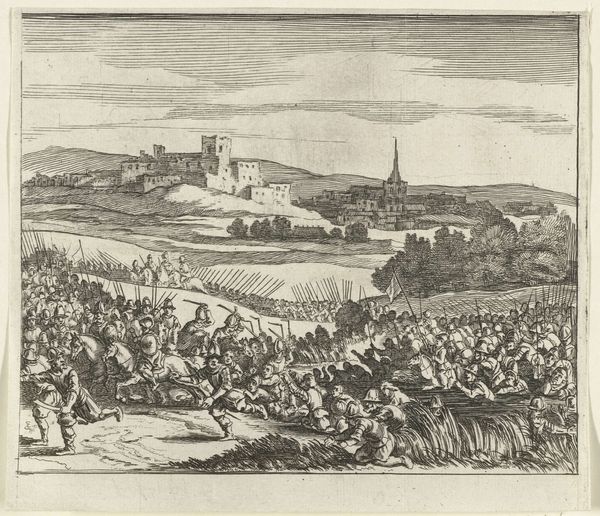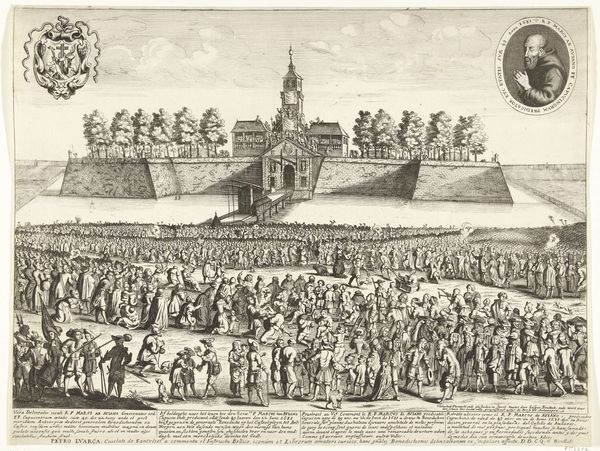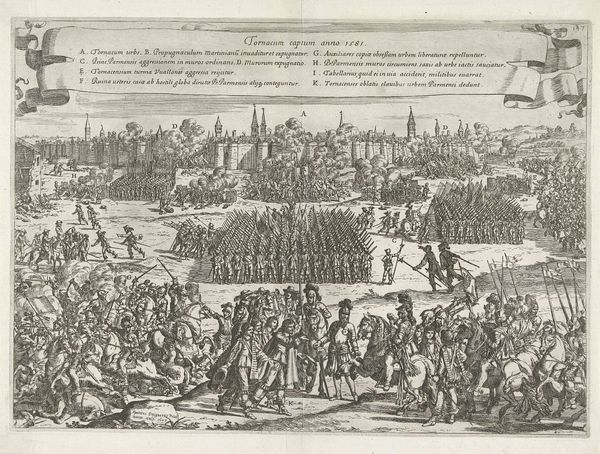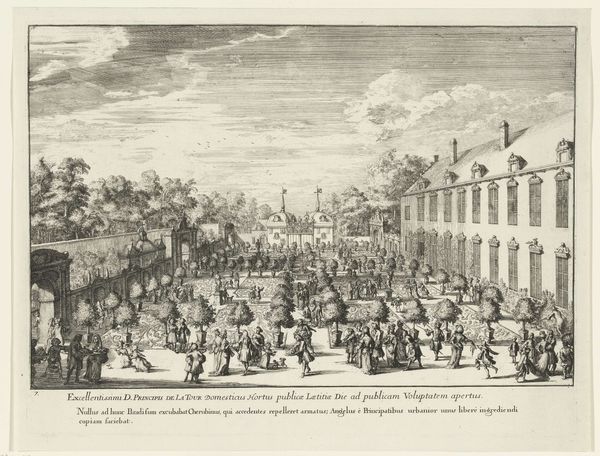
Dimensions: sheet: 41.7 x 66.5 cm (16 7/16 x 26 3/16 in.)
Copyright: CC0 1.0
Curator: This intricate scene is Jacques Callot's "Great Fair of the Madonna del Imprunetta," an engraving now residing at the Harvard Art Museums. What captures your attention first? Editor: The sheer density. It's a teeming landscape, yet rendered with such delicate precision. I'm immediately struck by the overwhelming presence of people, packed together like sardines. Curator: The fair itself was a major economic and religious event. Callot, active in the early 17th century, meticulously documented social structures within festival culture. What are the power dynamics we see portrayed? Editor: The church looms large, visually anchoring the print—a symbol of spiritual and temporal authority. But amidst the crowd, all walks of life seem momentarily united, blurring usual social demarcations through commerce and ritual. Curator: Indeed. Consider how Callot’s detailed depiction invites us to analyze the socio-political complexities inherent in public gatherings. The fair acted as a temporary reprieve, yet reinforced existing hierarchies. Editor: For me, the recurring motif of figures clustered around makeshift stalls speaks to enduring themes of exchange and survival. It suggests both opportunity and perhaps exploitation. Curator: Examining the legacy of such imagery reveals how public events can both reflect and shape social consciousness. Editor: Seeing such a complete world, I wonder if we today can fully grasp the symbolic gravity a fair held in that era.
Comments
No comments
Be the first to comment and join the conversation on the ultimate creative platform.

